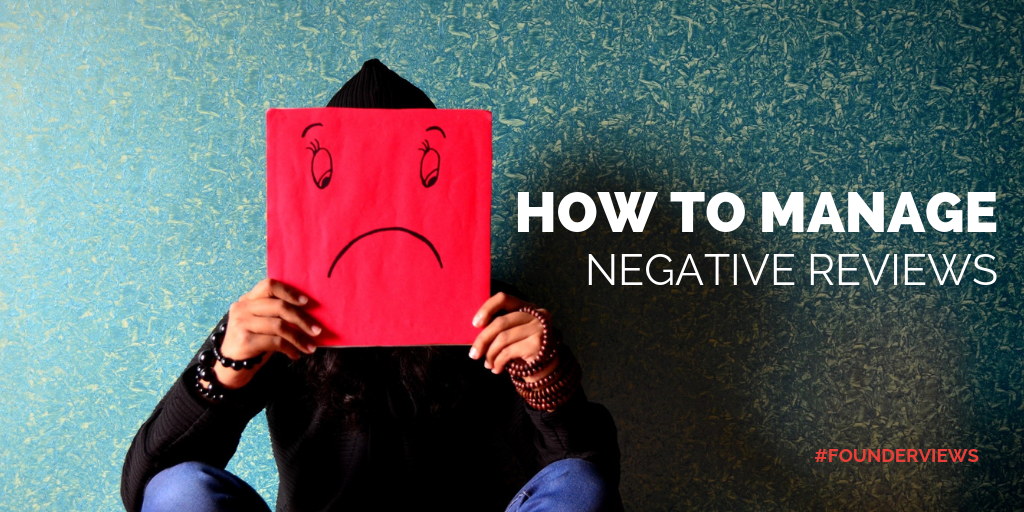There are very few things that can make me lose sleep at night. One of those things are negative reviews. Although negative reviews in our company are very rare, they always sting- really, really bad. Each negative review is even worse than the last. Reading a bad review feels like getting punched in the gut. Negative reviews suck, and they always will.
However, negative reviews are inevitable. As much as you strive to be the best at what you do, and consistently improve the level of service to your clients, you will never be able to make every person happy. No matter what, you will come across a client who simply can’t be satisfied.
Studies show that 85% of shoppers form their buying decisions based on online reviews. Too often, companies don’t take online reviews as seriously as they should. Nowadays, people prefer to trust their friends, peers, colleagues, or even recommendations from people they don’t even know, to form buying decisions. Each review, whether positive or negative, is a huge opportunity to examine what happened, learn from the situation, and continue to improve your processes and service.
When a negative review is written, it’s important to take a step back to try and understand why it happened. There are several reasons why people write negative reviews.
1. The client does not fit the profile for your target customer
Most negative reviews come from clients who expected something other than what they received. In many instances, it seems like the client leaving the bad review is being unreasonable. Although true in a lot of cases, it’s probably because the client simply doesn’t fit your target customer profile and had different expectations. In cases like this, it’s usually no one’s fault, but just an unlucky situation for both parties. This is why it’s important to properly qualify and attract the right clients.
2. Over-promising and under-delivering
Clients get frustrated when you over-promise and underdeliver. It’s much better to be honest and forthright with your clients at all times. They will always prefer you be up-front, rather than saying one thing and doing another.
3. Miscommunication
One of the most common reasons for negative reviews is due to miscommunication. After all, we’re humans, and we’re far from perfect. Sometimes emails get missed, scheduled calls get overlooked, or there is an oversight on a project. These things happen, you just have to be empathetic, apologetic and sincere. In most cases, level-heads will prevail.
When those negative reviews come in (and they will, believe me), you just have to suck it up and deal with them head on. Following these four steps will help you tackle any negative review in the best possible way.
Step 1: Relax
It’s very easy to panic and make quick, rash decisions when a negative review comes in. We know how important online reviews are nowadays, and a negative one can often feel like the sky is falling down. First thing you have to do is relax, breathe, and proceed with a rational, level head.
Step 2: Reach out to the customer
Often times, a quick reach-out to the customer from a manager or CEO can help ease things over. Calling the customer to understand what went wrong, and showing genuine concern, is critical. It’s important to show empathy with the client, and try and understand their perspective. This phone call can be the first step in trying to earn the client’s trust back. Also, depending on how the call goes, you should ask if they can kindly remove the negative review.
Step 3: Reply to the negative review
If you reached out to the client, and they aren’t going to remove the negative review, then at this point you should publicly reply to the review. It’s important to be honest, empathetic and genuine when writing the reply. When you reply to reviews, it shows potential prospects that your company cares about its customers and level of service. It also humanizes your brand. Most people are actually rational, and understand that no one is perfect, and mistakes happen. Believe it or not, a good reply to a bad review can easily neutralize its negative impact.
Step 4: Get to the bottom of what happened
As gut-wrenching as a negative review can be, it’s also a great learning opportunity for your team. You should audit the entire process with the disgruntled client to see what went wrong and how things can be improved moving forward. Make sure you communicate the outcome of your audit with your team, and ensure they understand the importance of maintaining a positive public image online, and the dire consequences of negative reviews on the business.






